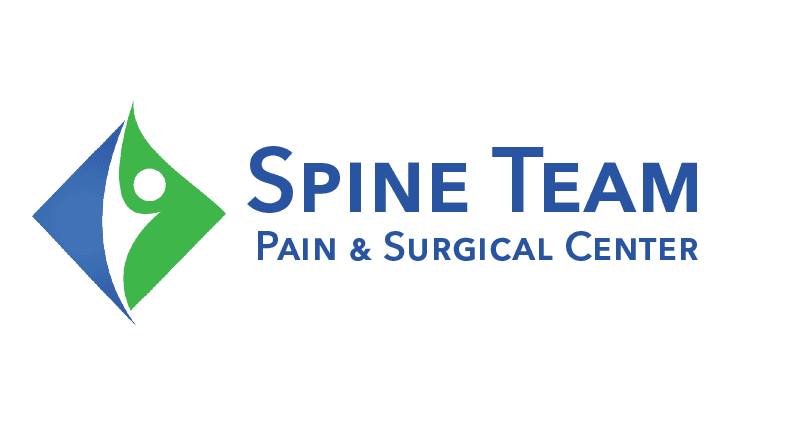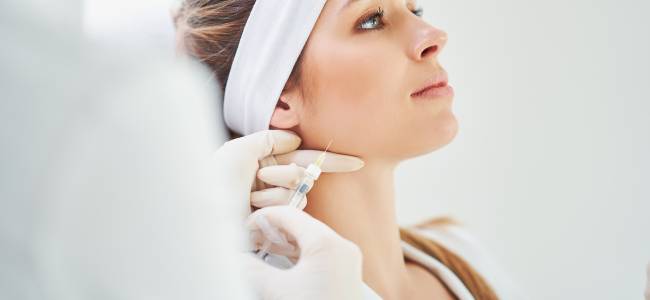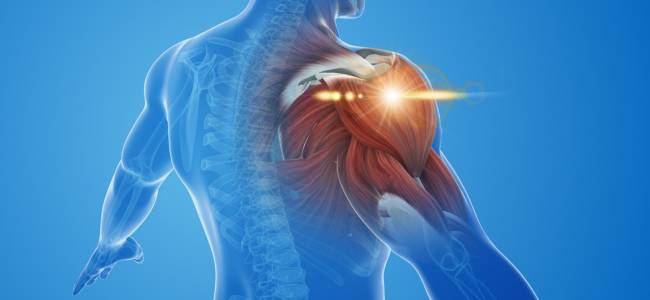What is PRP Therapy (Platelet-Rich Plasma)? How It Works
Are you searching for a revolutionary way to heal injuries or rejuvenate your skin and hair? PRP therapy harnesses the power of your own blood platelets to encourage tissue regeneration.
This article will guide you through understanding PRP Therapy, its benefits, and how it might be the innovative solution you've been looking for. Let's dive deeper into this regenerative marvel!
Key Takeaways
- PRP therapy utilizes the patient's own platelets and growth factors to promote tissue healing and regeneration by injecting concentrated plasma into the affected area.
- The regenerative technique is beneficial for conditions such as tendon injuries, osteoarthritis, skin rejuvenation, and hair loss stimulation without relying on foreign substances or drugs.
- PRP injections accelerate the body's natural healing processes, leading to enhanced recovery from injuries, reduced inflammation, improved skin health, and overall wellness.
What is Platelet-Rich Plasma (PRP) Therapy?
Definition
Platelet-Rich Plasma, or PRP therapy, harnesses the body's natural healing powers using a concentration of platelets from your own blood. It involves a higher level of platelets than normal, enriched with growth factors that can jumpstart tissue repair and regeneration in injured areas.
By isolating plasma through a centrifugation process, doctors create PRP that when injected into damaged tissues encourages wound healing and recovery. During the centrifugal process doctors separate the blood into its different components (red blood cells, white blood cells, blood plasma, platelets, etc.).
PRP treatment is becoming popular for its regenerative technique capable of treating various conditions such as tendon injuries and arthritis pain. This form of therapy taps into growth factors within the platelets that play a crucial role in the healing processes.
Unlike traditional methods, it uses essential components drawn from the patient's own blood to promote hair growth stimulation, joint injury support, skin rejuvenation and more without relying on foreign substances or drugs.
Procedure
PRP therapy harnesses the healing power of your own platelets to treat various injuries. The process involves a series of steps, from drawing blood to injecting the prepared plasma into the affected area.
- A small amount of your blood is drawn, typically from the arm, just like during a regular blood test.
- This sample is then placed into a machine called a centrifuge, which spins at high speed to separate different blood components.
- After centrifugation, the concentrated platelets are extracted from the rest of the blood.
- Meanwhile, the injury site is prepared for treatment. The area may be numbed with a local anesthetic to minimize discomfort.
- Using ultrasound guidance for precision, your doctor carefully injects the PRP directly into the injured tissue.
- Once injected, growth factors in the platelet - rich plasma begin working to stimulate and enhance healing.
Recovery
After platelet rich plasma injections, the recovery process kicks off as the body goes to work. Growth factors released by platelets start to repair and regenerate tissues at the injured site. This natural healing boost means less downtime for patients and often leads to a quicker return to normal activities.
The platelet rich plasma injection site might feel sore for a few days, but this is typically mild and manageable with over-the-counter pain relief if necessary. Patients receive clear instructions on how to care for the area post-therapy, ensuring optimal healing conditions.
As soft tissue begins its rejuvenation journey, you can look forward to improved function and reduced discomfort in treated areas. Moving from recovery specifics, let's delve into how exactly PRP therapy works at a cellular level in the next section.
How Does PRP Therapy Work?
PRP therapy works by using the patient's own blood to isolate and concentrate platelets, which are then re-injected into the affected area to promote tissue healing and regeneration.
Mechanism of action
Platelet-Rich Plasma (PRP) therapy works by harnessing the natural growth factors found in our blood cells. Upon activation of platelets in PRP, the P-granules are degranulated and release growth factors that accelerate wound healing and tissue regeneration at the site of tissue injury.
This interrupts the main pathway of inflammation by inhibiting its action, promoting healing and regeneration with a natural source of signaling molecules.
PRP therapy amplifies the body's own regenerative abilities to promote healing. The unique mechanism involves using platelets to release a concentrated mix of growth factors at the injured site, initiating a cascade effect that accelerates repair processes.
Benefits of using platelet-rich plasma
After understanding the mechanism of action, let's explore the benefits of using platelet-rich plasma:
- Enhanced healing: PRP therapy accelerates the body's natural healing process, promoting faster recovery from injuries and reducing downtime after procedures.
- Tissue regeneration: Platelet-rich plasma stimulates tissue regeneration, particularly in conditions like tendon injuries and osteoarthritis, aiding in the repair and rejuvenation of damaged tissues.
- Reduced inflammation: PRP injections help reduce inflammation associated with conditions such as tendinitis and osteoarthritis, alleviating pain and discomfort for individuals suffering from these ailments.
- Improved skin health: Platelet-rich plasma therapy can stimulate collagen production, revitalizing the skin's appearance by plumping sagging skin, diminishing acne scars, and treating hyperpigmentation.
- Hair growth stimulation: PRP injections have shown promising results in stimulating hair growth, making them a sought-after option for individuals dealing with male pattern baldness or seeking improved hair health and volume.
- Overall wellness: The regenerative properties of platelet-rich plasma extend beyond physical injuries to promote overall wellness, making it a versatile treatment option for various concerns.
Conditions Treated with PRP
Tendon injuries
PRP therapy effectively treats tendon and soft tissue injuries, such as tennis elbow or Achilles tendinopathy. It can stimulate the healing process in chronically injured tendons that have not responded well to rest and physical therapy.
Moreover, studies show that PRP injections reduce pain, repair muscle injuries, and accelerate healing for common tendon problems like patellar tendinopathy or rotator cuff injuries, or even chronic tendon injuries.
Platelet-rich plasma has become a widely used treatment for various musculoskeletal injuries and conditions, especially in orthopaedics and sports medicine. Its potential to promote tissue regeneration makes it an attractive option for individuals looking for alternatives to conventional treatments for tendon-related issues such as bursitis or epicondylitis.
Rotator cuff tendinopathy
Rotator cuff tendinopathy can be effectively treated with PRP therapy, providing a safe and beneficial effect for patients who have not responded to conventional treatments. Research studies have shown that PRP injection is a viable option for managing rotator cuff injury, from tendinopathy to tears, offering promising outcomes.
Despite conflicting evidence in some cases, PRP therapy has emerged as a potential treatment choice for rotator cuff tendinopathy due to its regenerative properties and ability to promote healing.
Post-surgical healing
Platelet-rich plasma (PRP) therapy has shown promising results in post-surgical healing by promoting tissue repair and regeneration. After surgery, PRP injections can accelerate the body's natural healing processes, reducing pain and inflammation while enhancing the recovery of damaged tissues.
This innovative treatment utilizes the concentrated growth factors from your own blood to support wound healing and tissue repair, making it a valuable option for individuals undergoing surgical procedures.
Harnessing the power of platelet growth factors, PRP therapy aids in jumpstarting the body’s innate healing mechanisms following surgery.
Aesthetic purposes
Platelet-rich plasma therapy offers promising benefits for aesthetic and sexual health purposes. It has gained attention as a non-invasive treatment for skin rejuvenation, showing positive outcomes in improving skin texture, tone, and elasticity.
Moreover, PRP therapy is considered a revolutionary outpatient option to address urinary and sexual dysfunction, offering potential regenerative effects on tissues. The use of platelet-rich plasma as an experimental alternative for disorders such as erectile dysfunction indicates a growing interest in the potential of PRP therapy to enhance sexual health.
These applications demonstrate the versatility of PRP therapy beyond traditional medical conditions and its potential to provide holistic health solutions.
Risks and Side Effects of PRP Therapy
PRP injections carry minimal risks and side effects as the plasma used is derived from the patient's own blood.
Potential side effects include:
- Minor bleeding
- Infection
- Pain at the injection site
- Mild swelling
There is also a small risk of nerve injuries, tissue damage, skin irritation, short-term ache or soreness at the injection site. In less common cases, patients may experience skin irritation, bleeding, or infection resulting from PRP therapy.
Although complications are rare, there may be instances of pain at the injection site and an extremely low risk of infection.
While PRP therapy offers numerous benefits for various conditions such as tendon injuries and osteoarthritis relief among others , it's good to understand these potential risks before undergoing treatment.
Conclusion
Platelet-Rich Plasma (PRP) therapy utilizes the body's natural healing properties to address a wide range of conditions, from tendon injuries to hair loss and skin rejuvenation. By concentrating platelets and growth factors from a patient's blood, PRP injections stimulate the body's regenerative processes for effective healing.
Through this innovative technique, individuals can experience improved recovery and relief from various musculoskeletal and aesthetic concerns.
FAQs
1. What are PRP Treatments and how do they work?
PRP (Platelet-Rich Plasma) therapy uses your blood's platelets to help heal injuries. Doctors take a little of your blood, separate the plasma with lots of platelets in it, and inject it into injured areas like tendons or ligaments to speed up healing.
2. Can PRP therapy help regrow hair?
Yes, PRP therapy can also be used on the scalp to regrow hair! It works by using the growth factors in your platelets to stimulate hair follicles for new growth.
3. Is PRP just for sports injuries or can it treat other conditions too?
While Platelet-Rich Plasma therapy is popular for treating sports-related tendonitis and other injuries, it can also provide relief for arthritis and work alongside stem cell therapy in regenerative medicine.
4. What makes platelet-rich plasma special compared to regular plasma?
In Platelet-Rich Plasma Therapy, there is more of this tiny blood cell called "platelets" that help your body heal itself faster than if you just had normal amounts from regular plasma.




